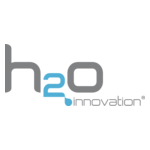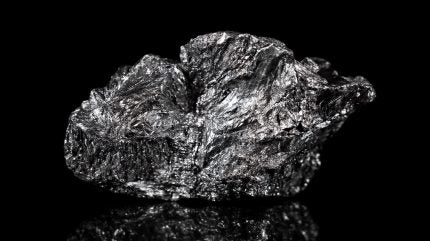
Sign up for daily news updates from CleanTechnica on email. Or follow us on Google News!
With an assist from some new technology tweaks, air-sourced heat pumps have emerged as the unsung heroes of the decarbonization movement. These modestly scaled electricity-powered appliances have become the go-to replacement for energy-guzzling HVAC systems in just a few short years, and that’s just for starters. The heat pump industry is also aiming to kick natural gas out of the hot water space, too.
A Heat Pump Hot Water Heater In (Almost) Every Home
While much attention has been lavished on the electric vehicle as a necessary feature of the green household of the future, hot water heaters are also due for an energy-efficient sustainability makeover.
“Water heating accounts for about 18% of your home’s energy use and is the typically the second largest energy expense in any home,” the US Department of Energy advises.
Switching from gas to an electric heat pump is the first sustainability improvement that comes to mind. “All occupied buildings need electricity, but not all buildings need gas,” the Energy Department points out.
Heat pump water heaters cost more up front, but new buildings that eliminate the need for a gas connection can also eliminate a lot of other up-front costs including pipes, valves, meters, and permits. Electrification retrofits also stand to gain from any available tax credits, rebates, and other incentives, as well as eliminating costs associated with a gas meter, in addition to long terms savings on utility bills.
“Reducing gas combustion in buildings can also reduce the associated air quality and explosion risks,” the Energy Department also notes.
Households that already use electricity for hot water also stand to gain by replacing their old tank with a heat pump water heater.
“Heat pump water heaters use electricity to move heat from one place to another instead of generating heat directly. Therefore, they can be two to three times more energy efficient than conventional electric resistance water heaters,” the Energy Department explains.
Working like a refrigerator in reverse, air-sourced heat pumps draw heat from the ambient air and transfer it to the water storage tank at a higher temperature.
Heat pump water heaters are not for everyone, but here in the US they could be for almost everyone. Since heat pump water heaters draw air from indoors, they need to have at least 1,000 cubic feet (about the size of a small bedroom) of air space around them, and the indoor space needs to be in the range of 40–90 degrees Fahrenheit all year.
Legacy Appliance Makers Love Heat Pump Water Heaters
Legacy appliance firms have been front and center in the energy efficiency movement, spurred along by government policies and research funding, so it’s no surprise to see some familiar names at the top of the heat pump water heater list.
In the latest development on that score, the leading global appliance firm Midea has released a new heat pump water heater to the North American market, and they are not shy about touting the benefits compared to conventional water heaters.
Midea calculates that its water heater is almost four times more energy efficient than older technologies by virtue of thermal energy transfer technology.
“By harnessing this technology, the Midea HPWH addresses key limitations of traditional systems, such as high operating costs, inconsistent heating and environmental impact. For North American households, this translates into up to 75% annual energy savings on energy bills,” Midea notes, seamlessly linking the aim of saving money with the aim of saving the planet.
Midea designed the new water heater as a drop-in replacement for existing water heaters to save money on retrofits as well as new builds. With installers and DIY-ers in mind, the company also points out that its water heater is lightweight and equipped with handles.
Midea states that the water heater is designed for ambient temperatures ranging from 15-56 degrees Celsius (59-114.8 degrees), which overlaps broadly though not exactly with the Energy Department’s guidelines.
To ensure reliability under all conditions, Midea offers their heat pump water heater in “economy mode” for normal operation as well as “quick heating” and hybrid modes depending on the need for an extra boost from direct electrical heat. When prospective buyers assess their savings they should consider their ambient indoor air temperature and factor in those additional operating modes if necessary.
Interested? Contractors, companies, and home owners can call 1-888-MIDEA-NA (1-888-643-3262) or visit mideacomfort.us.
Are You Ready For The Heat Pump Of The Future?
If you’re wondering what all the fuss over heat pumps is about, that’s a good question. In years past, heat pumps were not considered suitable for use in cold climates. However, more recently heat pumps have emerged as a key element in the building electrification movement. The primary aim of the building electrification movement is to knock fossil energy out of the building industry, with the follow-on goal of improving the energy efficiency of electrical appliances.
Although building electrification and energy efficiency are not exactly high on the to-do list of the incoming Trump administration, the building electrification movement is already well under way. Heat pumps are front and center, with the Energy Department lending its R&D funds to technology improvements including cold-climate operation, partly through a cold-climate technology challenge program that launched back in 2021.
The Energy Department set the challenge goal of efficiently delivering 100% capacity when outdoor temperatures are as low as 5 degrees Fahrenheit, or even lower. The outdoor temperature is a decisive factor because heating an indoor space requires a heat pump to draw air from outdoors (unlike a hot water heat pump, which can draw air from indoors).
Lennox International, Carrier, Trane Technologies, and Rheem were the first manufacturers to launch the challenge program. On January 4 of 2024, the Energy Department announced that Midea joined to participate in Phase 2 along with Bosch, Daikin, and Johnson Controls.
The Energy Department also noted that the launch of Phase 2 marked the end of the laboratory phase and the beginning of prototype installations. The eight participants were tasked with installing 23 prototypes in different cold-climate locations in the US and Canada.
“DOE is now turning to the nearly 30 state, utility, and other partners that were part of the original Challenge commitments to encourage the adoption of CCHPs [cold climate heat pumps],” the Energy Department said.
If the Trump administration wants to unwind all that activity, they’ll have their work cut out for them. On October 23, the Energy Department announced a successful conclusion of the prototype testing phase leading to marketability. Now they’re busy with the launch of a new rooftop heat pump challenge aimed at improving the energy efficiency of commercial HVAC systems, with AAON, Addison, Carrier, Daikin, Johnson Controls, Lennox, LG, Rheem, and Trane Technologies enlisted as manufacturing partners and Amazon, General Motors, Ikea, and Target among those on board at the installation end.
Follow me via LinkTree, or @tinamcasey on LinkedIn and Bluesky.
Image (cropped): The building electrification movement is getting another shot of adrenaline from new energy-efficient heat pump water heater technology (courtesy of US DOE).

Chip in a few dollars a month to help support independent cleantech coverage that helps to accelerate the cleantech revolution!
Have a tip for CleanTechnica? Want to advertise? Want to suggest a guest for our CleanTech Talk podcast? Contact us here.
Sign up for our daily newsletter for 15 new cleantech stories a day. Or sign up for our weekly one if daily is too frequent.
CleanTechnica uses affiliate links. See our policy here.
CleanTechnica’s Comment Policy




